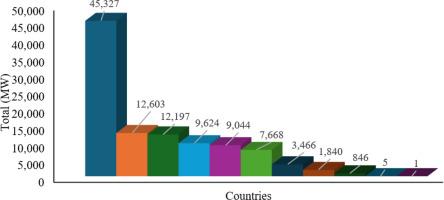Potential of renewable energy technologies for rural electrification in Southeast Asia: A review
引用次数: 0
Abstract
Rural electrification remains a significant development challenge in Southeast Asia, where over 45 million people still lack access to reliable electricity. This review uses a comparative analysis of empirical data and policy interventions across the region to evaluate the potential and barriers of renewable energy technologies (RETs) including solar, wind, biomass, and small-scale hydropower. The study aims to synthesize regional implementation outcomes, identify enabling frameworks, and highlight scalable hybrid solutions. Methodologically, over 100 published sources were reviewed to extract quantitative and qualitative data from key case studies in countries such as Vietnam, Indonesia, and the Philippines. Results show that solar PV systems, with a cost decline exceeding 80 % in the past decade, represent the most viable off-grid solution. Vietnam will achieve over 16 GW of installed capacity by 2022. Biomass energy contributes up to 15 % of rural energy use in Indonesia and Thailand, while small hydropower accounts for 20 % of rural generation in Laos and Vietnam. Hybrid renewable energy systems (HRES), integrating solar, wind, and biomass, reduce costs by up to 30 % compared to standalone systems and enhance supply reliability. However, deployment remains hindered by upfront costs (e.g., over $2500 per household for solar), limited technical expertise, policy inconsistencies, and socio-cultural resistance. The novelty of this review lies in its regional synthesis of RET policy impacts and its proposal of a diagnostic framework linking technology choice with socio-economic conditions. In conclusion, targeted subsidies, capacity-building, and community-driven models are crucial to overcoming barriers and unlocking RET's potential for inclusive, resilient, and sustainable rural electrification in Southeast Asia.

可再生能源技术在东南亚农村电气化中的潜力:综述
在东南亚,农村电气化仍然是一项重大的发展挑战,那里仍有4500多万人无法获得可靠的电力。本综述对整个地区的经验数据和政策干预进行了比较分析,以评估包括太阳能、风能、生物质能和小型水电在内的可再生能源技术的潜力和障碍。该研究旨在综合区域实施成果,确定使能框架,并突出可扩展的混合解决方案。在方法上,审查了100多个已发表的来源,从越南、印度尼西亚和菲律宾等国的关键案例研究中提取定量和定性数据。结果表明,太阳能光伏系统在过去十年中成本下降超过80%,是最可行的离网解决方案。到2022年,越南的装机容量将超过16吉瓦。在印度尼西亚和泰国,生物质能占农村能源使用的15%,而在老挝和越南,小水电占农村发电的20%。混合可再生能源系统(HRES)集成了太阳能、风能和生物质能,与独立系统相比,可降低高达30%的成本,并提高供应可靠性。然而,部署仍然受到前期成本(例如每户太阳能超过2500美元)、有限的技术专长、政策不一致和社会文化阻力的阻碍。这项审查的新颖之处在于它对可再生能源政策影响的区域综合,并提出了一个将技术选择与社会经济条件联系起来的诊断框架。总之,有针对性的补贴、能力建设和社区驱动模式对于克服障碍和释放可再生能源在东南亚实现包容性、弹性和可持续农村电气化的潜力至关重要。
本文章由计算机程序翻译,如有差异,请以英文原文为准。
求助全文
约1分钟内获得全文
求助全文

 求助内容:
求助内容: 应助结果提醒方式:
应助结果提醒方式:


